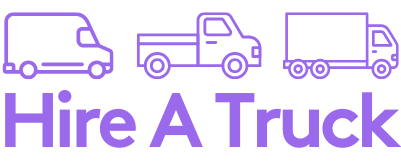When it comes to getting work done on a job site, few vehicles are as practical as a UTE (Utility Vehicle). They’re perfect for carrying tools, equipment, and materials to and from worksites. But with that convenience comes responsibility — tradespeople need to ensure they’re using their UTEs safely to prevent injuries, damage, or delays.
Whether you’re a carpenter, electrician, plumber, or builder, here are essential UTE safety tips to keep you and your team safe on the job.
1. Secure Your Load Properly
One of the most common causes of job site accidents involves unsecured loads. In Australia, the law is clear: your load must not fall off, be dislodged, or move in a way that makes your vehicle unstable.
- Use the Right Restraints: Use heavy-duty straps, chains, or ropes with a suitable load rating. Never rely on bungee cords alone, as they can snap or fail under pressure.
- Evenly Distribute Weight: Place heavier items on the floor of the tray and as close to the cabin as possible to maintain the vehicle’s balance.
- Avoid Overloading: Always check your UTE’s payload capacity in the owner’s manual or on the manufacturer’s plate. Exceeding this limit compromises braking and handling.
💡 Tip: Loose items, especially in open trays, can become dangerous projectiles if you brake suddenly. Tools should be secured in a locked toolbox, and lighter materials like garden waste should be covered with a secured tarpaulin.
2. Check Tyres and Brakes Before Each Trip
Your UTE’s tyres and brakes take a lot of punishment on job sites. A quick pre-start check can save you from a dangerous situation.
- Inspect Your Tyres: Use the “20-cent coin test” to check tread depth. Insert a 20-cent coin into the tread groove; if the tread doesn’t reach the platypus’s bill, it’s below the legal minimum of 1.6mm and needs replacing. Also, look for cracks, bulges, or embedded objects.
- Check Tyre Pressure: Inflate tyres to the manufacturer’s recommended pressure (found on a sticker inside the driver’s door) to ensure optimal grip and fuel efficiency.
- Listen to Your Brakes: If you hear grinding, squealing, or feel a spongy brake pedal, it’s a sign that your brakes need a professional check. Never ignore these warnings.
3. Drive Carefully on Job Sites
Construction areas can be unpredictable and full of hazards.
- Keep Speeds Low: Job sites often have uneven ground, hidden obstacles, and loose materials. Low speeds give you more time to react.
- Watch for Pedestrians: Always be aware of your surroundings and look out for other workers, especially when reversing. Use a spotter if your visibility is limited.
- Avoid Sudden Movements: Drive smoothly and avoid sudden braking or sharp turns, as this can cause heavy loads to shift and affect your UTE’s stability.
4. Mind Your Visibility
UTE trays and toolboxes can create blind spots that hide workers or equipment.
- Adjust Your Mirrors: Always adjust your side mirrors and rear-view mirror before setting off.
- Consider Tech Aids: If you frequently work in tight spaces, a reversing camera or parking sensors can provide a crucial extra layer of safety.
- Perform a Visual Check: Before moving your UTE, do a full walk-around to ensure the path is clear of people and obstructions.
5. Protect Yourself with PPE
Personal Protective Equipment isn’t just for the worksite—it’s also useful when loading and unloading.
- Footwear: Wear steel-toe boots to protect against falling items.
- Hand Protection: Use gloves with a good grip to prevent cuts and improve your hold on tools and materials.
- High-Visibility Clothing: Consider wearing high-vis clothing, especially when working around traffic or in low-light conditions, to ensure you are seen by other drivers and machine operators.
6. Perform Regular Maintenance
A well-maintained UTE is a safe UTE. A simple pre-start checklist can prevent accidents and costly downtime.
- Lights and Indicators: Check that all headlights, brake lights, and indicators are working properly before each shift.
- Fluid Levels: Regularly check fluid levels, including oil, coolant, and brake fluid.
- Tyres and Rims: Inspect for damage, correct inflation, and any missing wheel nuts.
- Safety Equipment: Ensure your first-aid kit is fully stocked and a fire extinguisher is accessible.
7. Avoid Overloading Rooftop Racks
If your UTE has a roof rack, be mindful of its limits, as exceeding them can compromise your vehicle’s stability.
- Check Load Ratings: Find the maximum load rating for both your UTE and the roof rack. The lower of the two is your legal limit.
- Secure Tightly: Use strong, load-rated straps to tie down ladders or other long items. Never rely on elastic bungee cords.
- Flag Overhangs: For loads that extend more than 1.2 metres from the back of the UTE, a red or high-visibility flag (at least 300mm x 300mm) is legally required.
Final Thoughts
Your UTE is one of your most valuable work tools — treat it with care, and it will keep you safe and productive. By securing loads, keeping up with maintenance, and driving carefully, tradespeople can reduce the risk of accidents on and off the job site.
Need a UTE for the Job? Hire a Truck
If you’re a tradie in Brisbane, Melbourne, Gold Coast, or Sydney looking for a reliable UTE, our fleet is the perfect solution. Our vehicles are regularly serviced and come with features like reversing cameras to make your job easier and safer.
Book your UTE hire today and get the job done right.
FAQs for UTE Safety on the Job Site
What is the legal load limit for a UTE in Australia? The legal load limit is based on your UTE’s Gross Vehicle Mass (GVM) and payload capacity. This information can be found on a compliance plate or in the owner’s manual. Never exceed these limits, as it is illegal and dangerous.
How do I safely secure a load in my UTE? Always use strong, load-rated straps, ropes, or chains. Distribute the weight evenly and ensure the load is secured against the headboard to prevent it from shifting while braking, accelerating, or turning.
What is the “20-cent coin test” for UTE tyres? The 20-cent coin test is a simple way to check if your tyre tread is above the legal minimum of 1.6mm. Insert the coin into the deepest groove; if the tread doesn’t reach the platypus’s bill, your tyres are not legal and should be replaced.
What PPE do I need when loading and unloading a UTE? Essential PPE includes steel-toe boots to protect against falling items, gloves to improve grip and prevent cuts, and high-visibility clothing to ensure you are easily seen by other workers and drivers.
Can I drive a UTE with a standard car licence? Yes, in Australia, you can drive most UTEs with a standard Class C car licence, as long as the vehicle’s Gross Vehicle Mass (GVM) does not exceed 4.5 tonnes.



